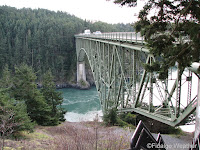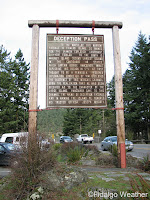Stimulus
The Great Depression of the 1930's was in some ways worse and in other ways better than our situation today. It was worse because I don't believe we are as desperate overall as the people of that time. We still have programs in place from those days to mitigate the adversity. It was better because President Roosevelt seemed to have a keener notion of what was required to get us out of trouble. Reckless investing, tax cuts for the wealthy and bad loans led us into the Depression. Sound familiar? We ignored our history and look what happened. Our history also provides a template for what to do now. Under the "New Deal," several programs aimed at relief, recovery and reform were implemented. Two of them were the Civilian Conservation Corps (CCC) and the Works Progress Administration (WPA). Both had the purpose of providing jobs. Jobs put money in pockets. Money in pockets is spent on goods and services. The spending of money by ordinary people creates demand. Demand motivates job growth.
Deception Pass State Park on Fidalgo and Whidbey Islands was built by the Civilian Conservation Corps. This program was designed to provide jobs for young men 18-24 years of age. Food, clothing and housing were provided and they earned $30 a month. They were required to send home at least $22 of that salary. What was formerly a bathhouse and comfort station is now the CCC Interpretive Center at Bowman Bay. One of the exhibits is titled "Best Time of My Life." My step-father often spoke fondly of his time in the CCC's working in Mount Rainier National Park. Work included cutting trails, clearing recreation areas, planting trees and putting up park structures. After 75 years, notice the enduring beauty and craftsmanship of the "parkitecture" style buildings above. No tacky prefabs thrown up for a quick fix here. The park welcomes more than 2 million visitors every year.
In the heart of the 4,000+ acre park, the Deception Pass Bridge connects Fidalgo and Whidbey Islands. It was a project of the WPA and opened in 1935. It was built in 11 months for $482,000, astonishing numbers to us. Today the bridge carries 15,000 crossings a day and it is the most-photographed structure in the State of Washington. Both the scale and the organic design of the bridge blend with its environment. It neither offends nor steals from the grandeur of this pristine setting. The bridge was added to the National Register of Historic Places in 1982.
Today, much more needs to be done on the jobs front. We have gone off the rails a bit with the notion that billionaire bailouts with tax cuts will produce jobs. This idea is actively promoted by, uh, billionaires. These tax cuts have been in place for ten years now, but the job growth over the period has been zero at best. Wealthy corporations that outsource American jobs overseas, at minimum, should not be rewarded with tax cuts and other incentives.
We ignored our history, but from our history came the two examples cited here. They are much-loved icons, created during a tragic period and given to us to enjoy. We seldom appreciate the circumstances under which they were built. In 2085, will our descendants be able to look back and appreciate what we are doing now?
Deception Pass State Park on Fidalgo and Whidbey Islands was built by the Civilian Conservation Corps. This program was designed to provide jobs for young men 18-24 years of age. Food, clothing and housing were provided and they earned $30 a month. They were required to send home at least $22 of that salary. What was formerly a bathhouse and comfort station is now the CCC Interpretive Center at Bowman Bay. One of the exhibits is titled "Best Time of My Life." My step-father often spoke fondly of his time in the CCC's working in Mount Rainier National Park. Work included cutting trails, clearing recreation areas, planting trees and putting up park structures. After 75 years, notice the enduring beauty and craftsmanship of the "parkitecture" style buildings above. No tacky prefabs thrown up for a quick fix here. The park welcomes more than 2 million visitors every year.
In the heart of the 4,000+ acre park, the Deception Pass Bridge connects Fidalgo and Whidbey Islands. It was a project of the WPA and opened in 1935. It was built in 11 months for $482,000, astonishing numbers to us. Today the bridge carries 15,000 crossings a day and it is the most-photographed structure in the State of Washington. Both the scale and the organic design of the bridge blend with its environment. It neither offends nor steals from the grandeur of this pristine setting. The bridge was added to the National Register of Historic Places in 1982.
Today, much more needs to be done on the jobs front. We have gone off the rails a bit with the notion that billionaire bailouts with tax cuts will produce jobs. This idea is actively promoted by, uh, billionaires. These tax cuts have been in place for ten years now, but the job growth over the period has been zero at best. Wealthy corporations that outsource American jobs overseas, at minimum, should not be rewarded with tax cuts and other incentives.
We ignored our history, but from our history came the two examples cited here. They are much-loved icons, created during a tragic period and given to us to enjoy. We seldom appreciate the circumstances under which they were built. In 2085, will our descendants be able to look back and appreciate what we are doing now?






